Warhammer has begun to invade the mainstream media like never before. You may have played the smash hit video game of 2024 Warhammer 40,000: Space Marine 2 or watched Amazon’s highly rated Secret Level episode – Warhammer 40,000: And They Shall Know No Fear, but did you know that the popularity of the premier tabletop wargaming brands goes far beyond that?
Whether you’re interested in Warhammer 40,000 (40K) , a grimdark sci-fi universe where there is only war, or Warhammer Age of Sigmar (AoS), a fantasy setting of heroes, gods and monsters, getting started into this hobby world can seem daunting.
Let’s start with the basics. Tabletop wargaming, specifically Warhammer, is a strategy-based game where players simulate battles using miniature models (minis) ranging from infantry to tanks and hulking war machines. Each of these minis are built and can be painted by the player and come together to create an army. These games have detailed rules, involving maneuvering your models around the battlefield filled with terrain and rolling dice to determine the outcomes of shooting, melee, and other actions.
However, many of the people that partake in the world of Warhammer focus their time on one area of the hobby: collecting the miniatures, perfecting their painting style, or mastering the game. Of course, you can do all three, but the hobby allows you to engage as you wish and at your own pace.
I recently rediscovered my love for Warhammer miniature painting and wargaming, diving back into the hobby with fresh enthusiasm after a 20-year hiatus. Joining me on this journey into the vast world full of stories, characters and game types are my son, nephew and brother-in-law. As someone who has experienced Warhammer and played the game in my past it all felt familiar but new, but as complete newbies I couldn’t help but feel excited and overwhelmed for my companions.
Now that we are a year in, I wanted to share our learnings and a simple guide of where to start with this expansive hobby.
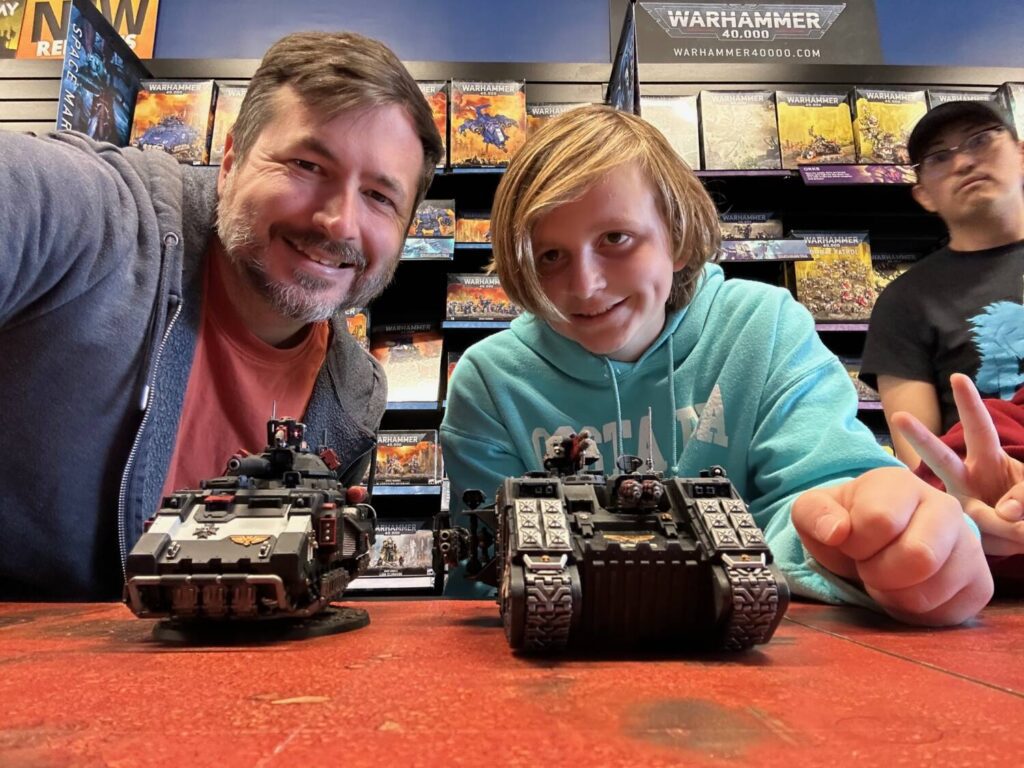
Where to start?
I’d suggest starting with some online resources like start-warhammer.com which lets you explore the games, factions and miniature catalogues. Here you will get an introduction to the game settings and meet the poster boys of the main games – Ultramarines (40K) and Stormcast Eternals (AoS). Familiarizing yourself with some of the basics will help you on your journey and begin connecting you with specific worlds, armies, and characters.
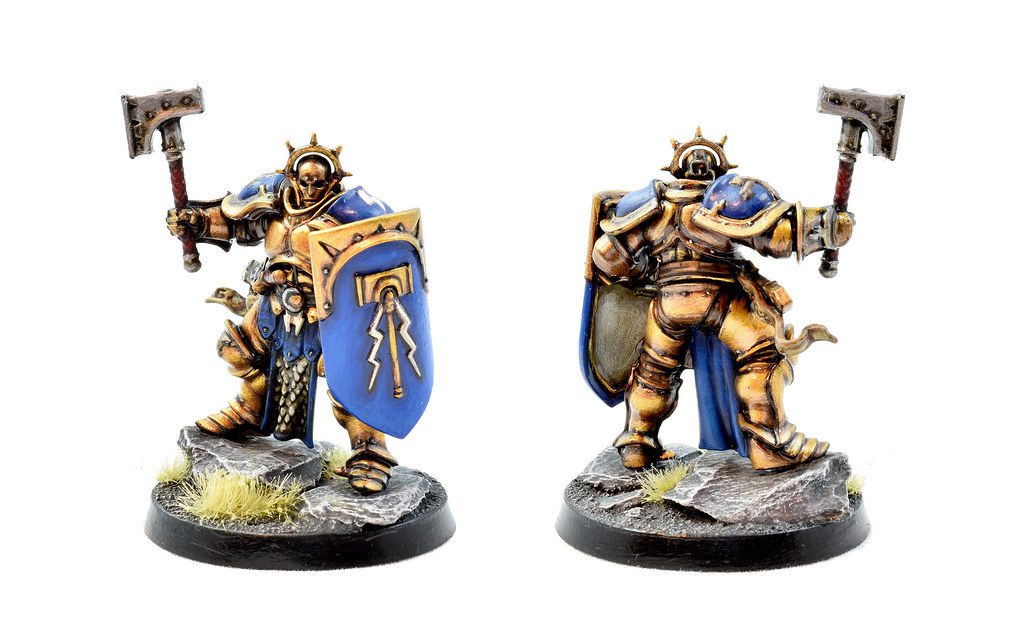
My recommended next step would be visiting a hobby store to interact with members of the Warhammer community and see some of the minis up close. We were lucky enough to discover an official Warhammer store located near-by. Whether it’s an official store or a local hobby store offering Warhammer products we have been nothing but impressed and welcomed by the community, willing to teach us about the games, the lore, or offer advice on collecting. All of the official stores as well as some local stores offer an introduction to painting your first miniature! You should also be able to arrange an introductory game so you can get a feel for the rules. Just call ahead to make sure there is someone available to help.
We took our next step after our store visit, by purchasing a mini and paint introductory set. These sets are great to get a feel for building and painting your first minis. They come with all the basics you need and are available for both AoS and 40K.
Building and painting your first mini
As I mentioned before, if you can, find a store that gives you a free mini to build and paint with their help. If not, there are so many online resources to help and share inspirations of color schemes. A few essentials you should consider when creating your first set of minis. Plastic clippers (essentially pliers with a cutting edge) to cut out your mini pieces, glue – super glue works just fine, some paint brushes, mini primer and of course paint.
Paint has come a long way since my first foray into Warhammer 20 years ago. There are so many colors and brands offering high quality mini paint, with Warhammer offering their own range called Citadel. Within the painting community there are also many techniques and styles, but the two most referred to are ‘classic’ and contrast or speed painting.
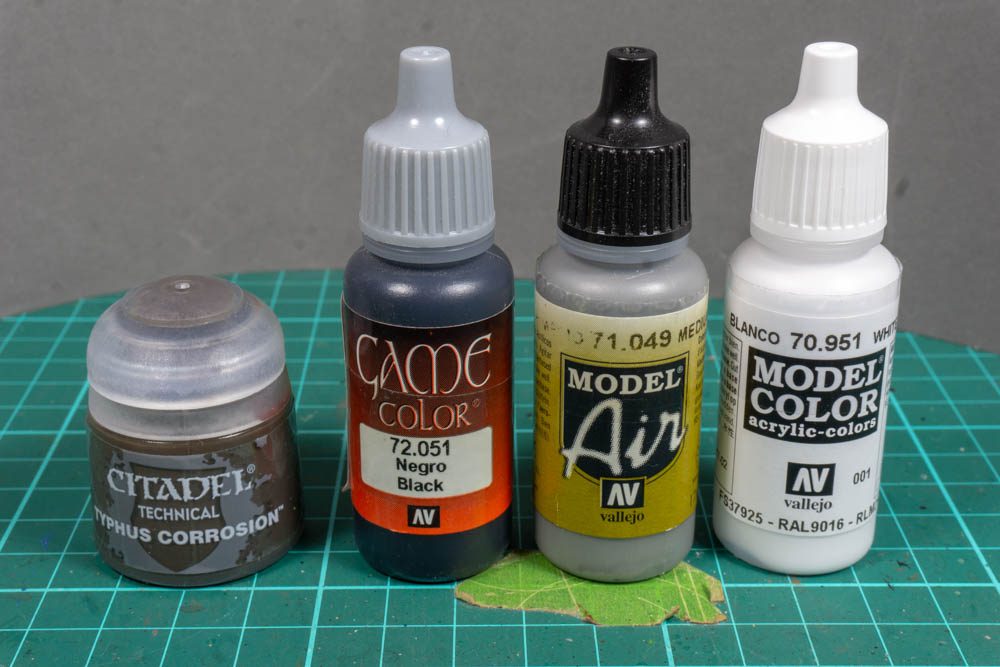
The classic style generally relies on building up layers of color, by highlighting edges with lighter colors to build depth. While contrast painting uses much thinner consistency paints that fill in the detail and create color depths as they dry. Contrast can be used to create dramatic looks with minimal effort and is often preferred by beginners.
Regardless of style you choose, the world is your oyster when it comes to painting your minis. You can choose to replicate the color schemes seen on the box art or use your creativity to invent your own multicolored army. Here’s a great article for some beginner tips 5 Steps to Great Looking Miniatures – Meeple Mountain
A final thought on painting, I always recommend saving your first painted mini. Having a reminder around of where you started and a benchmark as to how quickly you improve your painting style.
Learning to play the game
There are several ways to learn the basic concepts of Warhammer wargaming. Many of the introductory sets come with the core rules, or alternatively, they are available online to download for free. But even the core rules are expansive and most likely require hours of study before you can start playing.
A much simpler way to get started is through watching online tutorials and running minor scenarios with a handful of minis. Most of the starter sets come with a quick start or scenario guide, that step by step walk you through, movement, shooting, combat and saving. Each scenario adds a little more of the game and builds you up to a skirmish battle. You can also check out this handy article to get you started Learning to Play Warhammer 40,000 (10th Edition).
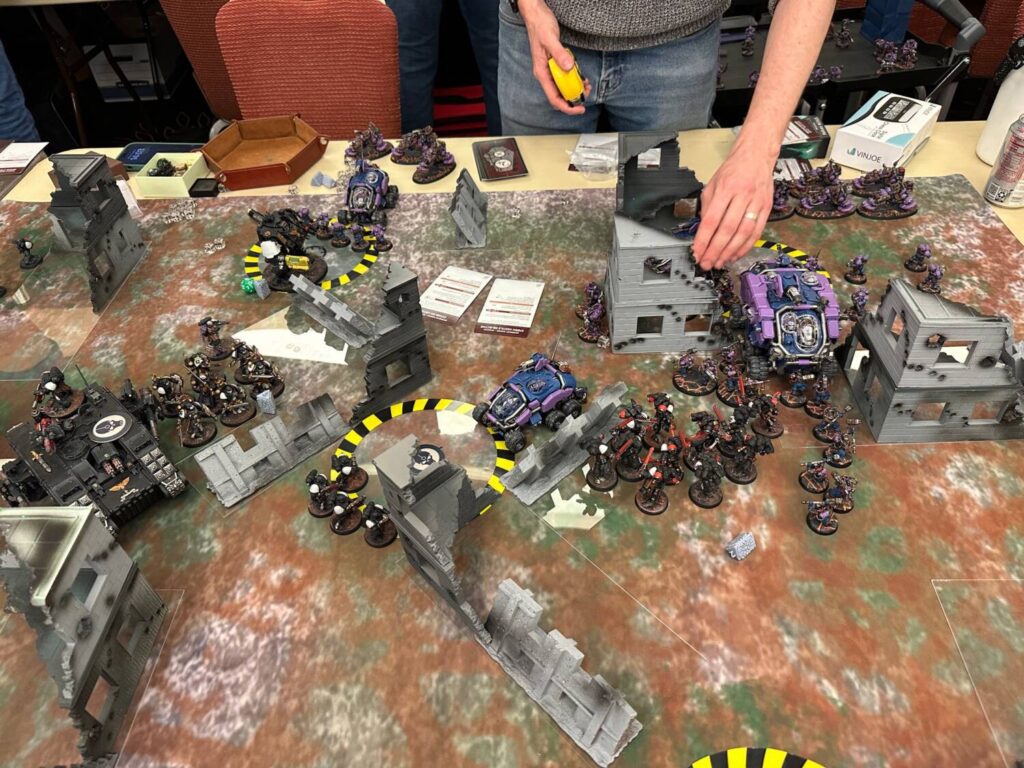
Still feeling overwhelmed, do what we did and head over to your local wargaming or hobby store. The community is very welcoming and will do everything they can to help you learn about the game and share their experiences of playing this epic battle game. Most stores have minis, a battlefield and terrain that give you the Warhammer tabletop game experience, without having to commit to an army early on. As beginners, we used a dining room table as the battlefield and simple household items for the terrain. Using your imagination, a few cans of soda can make a great fuel depot!
The tough choice comes next
After a little practice painting and playing with your introductory models, you’ll want to take the next step, by starting to focus on one game and an army. Warhammer offers many solutions for beginners such as starter sets which include rule books and dice, or army bundles called combat patrols and spearheads that can be used in a simplified version of the game.
Even with these starter sets the options may seem endless. 40K alone offers more than 25 factions to pick from. The ‘good guys’ of the Imperium of Man – Space Marines. The twisted armies of Chaos, or the alien Tyranids with the single focus of consuming all biological life. Each one has its own unique look, playstyles, and lore. How did we choose? The one constant we kept hearing – use the rule of cool. Learn a little about each faction’s playstyle and lore, then whatever calls to you and excites you to paint it, go for it. Rules change and so do the meta-armies, but what looks and sounds cool to you doesn’t. Use this handy guide to help choose your 40K army – Warhammer 40,000 – A Guide to Choosing Your First Army.
Joining the community and the road ahead
As your adventure progresses make sure to join Warhammer’s extensive community offering online tutorials for painting and playing, content creators sharing their artwork, local and online clubs offering events and play opportunities.
To leave you with this final thought. Warhammer is as much about creativity and an opportunity for storytelling as it is about strategy and battles. Take your time, enjoy the many aspects of the hobby, and don’t be afraid to ask for advice from the community.
Bibliography
Game Rules:
- Warhammer 40,000 rules – https://www.warhammer-community.com/en-gb/downloads/warhammer-40000/
- Warhammer Age of Sigmar rules – https://www.warhammer-community.com/en-gb/downloads/warhammer-age-of-sigmar/
Miniature Painting:
- Edwards, Aaron – 5 Steps to Great Looking Miniatures, Meeple Mountain, 2017 – 5 Steps to Great Looking Miniatures – Meeple Mountain
- Citadel Paints Getting started Guide – https://citadelcolour.com/getting-started/
Community Links:
- Warhammer Community homepage – https://www.warhammer-community.com/en-gb/
- Warhammer and hobby store finder – https://www.warhammer.com/en-US/store-finder
- Warhammer official Youtube channel – https://www.youtube.com/@officialwarhammer
Media:
- Secret Level, Warhammer 40,000: And They Shall Know No Fear, Season 1 Episode 5, Amazon Studios, 2024
- https://www.primevideo.com/detail/Secret-Level/0IT5QD04WG06AKTABIYKVOTHYM
- Warhammer 40,000: Space Marine 2, Focus Entertainment, 2024 – https://www.focus-entmt.com/en/games/warhammer-40000-space-marine-2


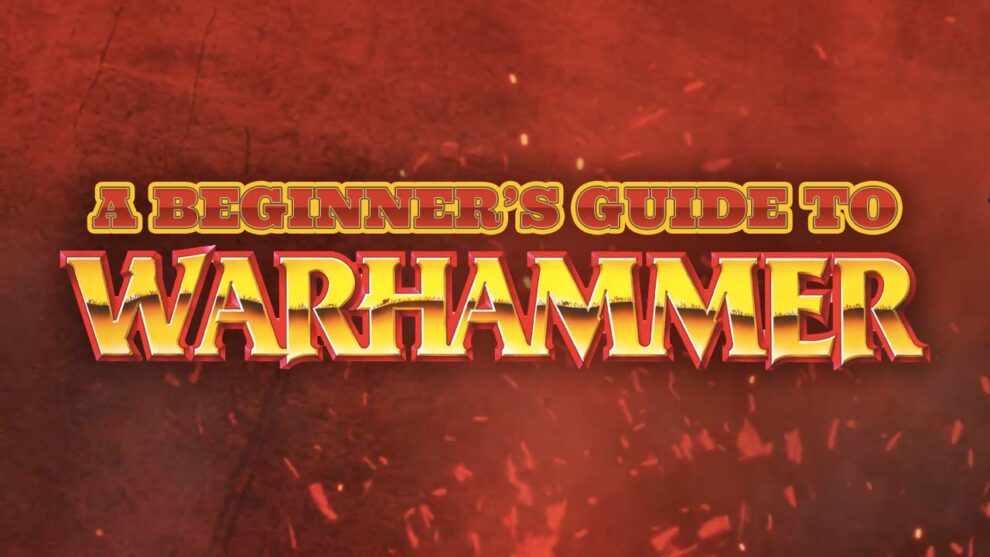

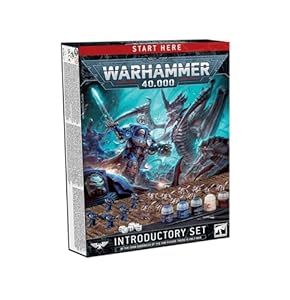
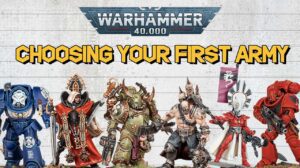
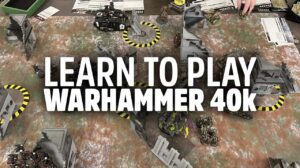


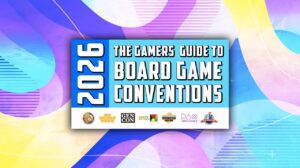

A very informative guide. I hope it inspires others. Well done Lee.
Your article is a nice summary for prospective players who are considering dipping their feet into the very deep pool that is Warhammer/WH40K. The list of resources that you included was a very practical addition to help guide players towards choosing what kind of army they may like to explore further.
I played WH40k for more than fifteen years across 5 different editions (3rd through 8th), and during that span of time I observed a number of changes that altered how I viewed the game, Games workshop itself and my relationship with both. What I would like to share is a different perspective, perhaps contrarian to your own, but done with the intent to inform the potential player about some details that may affect how much money, creativity and time they would like to invest in this tabletop hobby.
My initial exposure to the GW universe was a game called Space Hulk, which was a dungeon crawler-esque exploration of a massive derelict by a group a Space Marines who explored and secured the corridors full of swarming Genestealers with power swords and heavy weapons. The models were gorgeous (for their time) and the gameplay was simple and quick. In many ways, the leap from a discrete board game format to the more variable one of tabletop combat was both exciting and a little intimidating. The 3rd edition manual contained gorgeous artwork but also a hundred pages of rules, various points values for your units and a long list of upgrades/enhancements that could equip your troops with to face a dangerous foe. As WH40k cannot be played solo, you need a partner- specifically a partner that has assembled their own army, understands the rules to a similar degree as you do and has the scheduling flexibility and time to sling lots of dice as you face each other across the kitchen table, uh, battlefield.
It was phenomenal.
I played regularly at a few game stores with dedicated tables adorned with a variety of painted terrain pieces, against opponents that spanned the experience spectrum from novices with un-painted armies (perfectly acceptable for casual play) to tournament winners (who would occasionally place a fully painted $400 unique resin model on the field as a testament to their dedication) who tested my tactical expertise in different ways. I met some great people, many of whom taught me nuances about the game and various strategies, and shared their tips and tricks about how to become a better modeler and steward of a growing army of plastic. I learned how to apply inks and drybrush models to bring out the glorious details of Space Marine armor, used different kinds sprue accessories to match my Space Marine chapter and bought my first airbrush to really evaluate my growing skills as a tabletop enthusiast.
These were good times, but like all good times they eventually change in a way that makes one self-reflect. I began to look at other hobbies as two fundamental paradigm shifts took place:
1] The introduction of the Primaris marines (an evolved Space Marine) and an expansive arsenal of platforms meant to supplant the commonplace Rhino & Landspeeder variants. The was a dramatic (and unthematic) lore departure that allowed each chapter to access advanced weaponry that served as sci-fi corollaries to the modern US Army Brigade Combat Team (including aerial drones). This was a jarring change to the long-accepted restrictions under which Space Marines practiced the art of war in a Grimdark universe, and one that was difficult to follow both thematically and financially. GW released the new models at exploitative levels, and the Primaris marines and their vehicles were a different scale from the armies players had previously assembled and reverently painted.
2] The commercial imperatives affected not just the lore aspects of the established WH40K universe, but also strained the relationship between GW corporate and its traditionally loyal fan base. Legal notices and lawsuits were issued against various fan and retail platforms, with a schedule of new releases that maximized profit and fan frustration in equal measure. These conditions were exacerbated by frequent changes in retail prices and gameplay cost points that made it challenging for fans to acquire and maintain game-legal armies.
There were a number of reasons I left WH40k behind, but the primary reason was that I did not wish to continue with a hobby that seemed openly contemptuous of me as a player and paying customer. Ironically, my departure from the WH40k universe allowed me to rediscover my affection for board games, a number of which I have commented upon here in the MM forum.
In my heart, I still think Warhammer/WH40k is a wonderfully open universe to explore and enjoy with a friend or two. I just want the prospective player to be aware of some of the more problematic aspects of the hobby, so they can temper their own expectations accordingly. I recently scanned the GW retail homepage and noted some of the prices: the current starter set (containing 38 models representing elements of the Ultramarines and Tyranids [unassembled & unpainted] and a highly abbreviated basic rules booklet) is $112. The Ultimate starter set (44 models plus some 3D terrain) is twice the price. In your article, you didn’t mention that players may be able find some older kits and/or armies on eBay, or WH40k-style pieces on Etsy that are less expensive. I am very cautious about giving advice as to how people spend their disposable income on their beloved hobby, but pricing is an unavoidable consideration that affects how quickly your army can grow.
GW has been a pioneer for the tabletop wargaming community for many good reasons. Like any company, they’re not perfect and sometimes the competition between commercial necessity and player preferences creates less than satisfactory experiences. I don’t want to discourage players from sampling WH40k, I just want them to see the pros and cons before they commit too many personal resources to it.
I wish GW still made Space Hulk. Sadly, it’s OOP with an average eBay price of $350. 😭